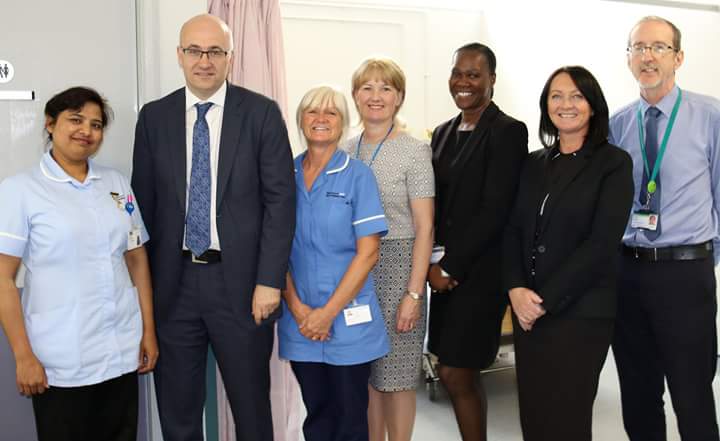The Integrated Transfer Team will actively identify elderly patients across hospital wards who are medically fit to leave a hospital bed and arrange their transfer home or to a community environment working closely with colleagues to ensure all additional requirements are put swiftly in place enabling patients to spend less time in a hospital bed.
The staff involved in this worked with the Stockport Together team to design the new service and pathways following a pilot on the short stay older people’s ward and are now all co-located in the newly refurbished transfer hub. The launch of the team and service marks a key milestone in the Stockport Together programme which sees health and care providers in the borough come together to develop a single plan to join up health and social care provision to meet the needs of an ageing population and financial pressures.
Jon Rouse, Chief Officer for the Greater Manchester Health and Social Care Partnership, visited the transfer hub last week and heard from staff about how the new way of working is helping discharge a number of patients who have had long stays and how this is helping improve patient care and the A&E four hour target.
Margaret Malkin, Acting Director of Community Healthcare at Stockport NHS Foundation Trust, said: “Our hospital offers very good care and treatment but once patients are medically well, it is far better for them to be at home or in a community environment where we know they will recover far quicker, with appropriate support in place. “This team will work across the hospital to identify patients suitable for safe discharge, putting the necessary support and adaptations in place to allow them to continue their recovery in a familiar environment and assess their longer term needs in the right place. “Evidence shows that the longer an elderly patient stays in a hospital bed, the worse the outcome for their long term recovery and return to independence. Getting people back to a familiar environment with their family, friends and pets around them helps with their general health and wellbeing, preventing muscle wastage and regaining confidence in their ability to manage independently. This service also means we are freeing up beds so that people coming into A&E should have a shorter wait if they need to be admitted to a ward for treatment. “I’m really proud of the new team who have come together to design how the service works, breaking down traditional boundaries to put the safe discharge of patients first.”
Eileen Burslam, 76, who fractured her pelvis in a fall shortly before Christmas, was one of the first patients who was discharged home for assessment during the transfer to assess pilot. Rather than spending 10 days in hospital, she was able to go home with additional support after only four days. “It was a marvellous service. I was worried if I would ever get home as I was in so much pain but they sorted everything and it was such a relief that someone supported me to manage, back to my family and my dog. With the physios working with me in hospital then at home and setting me goals, and with carers coming in each day to help with personal care and meals, I’m now more or less back to where I was before I fell.”

